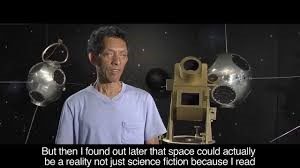During one interview in 1971, an interviewer sought to find out what George did in his free time. He called these hobbies. Naturally, when someone asks you what you do in your free time, you probably have a list of things you want to offer. For most people, the items are so many that they have to prioritize what they love doing the most such that they end their list with etcetera. I can imagine the reporter feeling giddy about the information they are about to receive. After all, they are interviewing a man whose invention enabled people on the moon to examine the earth. Picture that. A human being so brainy that their invention is not only useful on earth but also the moon. What will you expect such a man to do when he has some time to himself?
George looked at the interviewer and responded with, ‘Hobbies?’ as if he was shocked by the idea. He went on to inform the reporter that he had so much work that it was hardly necessary to have a hobby. Note the way he put his message across. He did not say that he did not have time to pursue other things. What he did was say that he did not need to pursue anything outside of his inventions. So, his work must have been so fulfilling to him that he did not need to look elsewhere for gratification. How amazing is that!

Source: https://encrypted-tbn0.gstatic.com/images?q=tbn:ANd9GcQal5vGBVURuOWXnFocmzblU6PHs5Hi9YIekA&usqp=CAU
Who is George Robert Carruthers?
George was born in Cincinnati, Ohio, to a civil engineer father and a mother who worked for the US Postal Service. As a young boy, he lived in Milford, Ohio, probably doing what other boys his age were doing. His father died suddenly, prompting his mother to move him and his siblings to her native home of Chicago. Here, he took up an interest in visiting museums, libraries, and planetariums. By the time he was 10, George had already built his first telescope, a significant achievement at such a young age. He was working as a delivery boy at the time and used his savings to buy cardboard tubing and lenses, which he used to assemble the device.

Source: https://encryptedtbn0.gstatic.com/images?q=tbn:ANd9GcSdPOmuUNtcXUK4uFdf_HG7sWGAA_m-BFkeSA&usqp=CAU
It might surprise you to know that George was not doing very well in his elementary education. Even with his keen interest in space, he was failing in math and physics. However, he clinched three science fair awards and continued to invest his time in the Chicago Rocket Society. He joined the College of Engineering at the University of Illinois, where he received a bachelor of science degree in aeronautical engineering. That was in 1961, at the tender age of 22. His interest in engineering only grew from here, and he continued with his graduate studies, walking away with a master’s degree in nuclear engineering in 1962, just a year after completing his undergraduate studies. Two years later, he held a Ph.D. in aeronautical and astronautical engineering at only 25 years of age. That enough was an amazing accomplishment.
Research Career
During his research, he applied to work at the US naval research laboratory, where he focused on far ultraviolet astronomy. You might wonder why this was his area of interest. We will take a short walk down memory lane. While we may not have mentioned this initially, George’s father was not just a civil engineer, but rather one who worked in the United States Army. For the first 12 years of his life, George borrowed a lot from his father, which played a huge role in his interest in science. His father died when George was only 12, but it was enough time for him to cultivate his interest, and he had already built his own telescope by this time. His interest in naval research went hand-in-hand with something that burned deep inside him.

Source: https://encryptedtbn0.gstatic.com/images?q=tbn:ANd9GcSyCWZb3qHzti6bA2fC1lFfAMM4Oehl7qROgg&usqp=CAU
Inventions
Five years after acquiring his Ph.D., George was again making waves, having invented the image converter. This device enabled the detection of electromagnetic radiation in short wavelengths. It was so successful that in 1970, it recorded the first observation of molecular hydrogen in outer space. It might all seem like a lot of jargon, but it’s clear that this was quite an impressive invention. George made a few tweaks far ultraviolet camera/ spectrograph. This time, his invention made it to the moon and was an integral part of the Apollo 16 mission.
His interest in naval research was so high that in the 1980s, he decided to share his love for research with young high school students. His Science and Engineers Apprentice program made it possible for students to work alongside scientists at the naval research laboratory during the summer. For aspiring scientists, this was a dream come true, and it also spearheaded the entry of more African-American men and women into research areas, in the Navy and without.
George’s inventions were so impeccable that they captured an ultraviolet image of the Halley’s Comet passing the earth in 1986. He was far from being done, and in 1991, he created yet another invention (a camera) that fast-tracked a shuttle mission. Over time, George moved towards imparting education and taught at the Howard University in Washington DC, focusing on NASA Aerospace studies.
At the time of his passing, George had been recognized by several professional and academic organizations for his great works in the field of space science. Moreover, he was inducted into the National Inventors’ Hall of Fame and won several awards, such as the Arthur S. Fleming award.
As an African American, George worked hard and dedicated his life to doing what he loved most, and by doing so, he not only made space missions easier, but he also inspired other African-American young men and women to push for their dreams.
